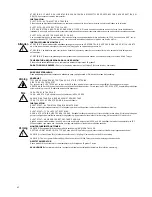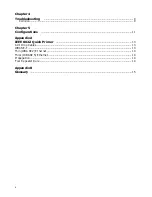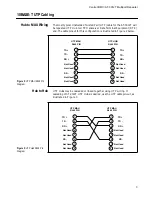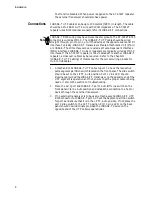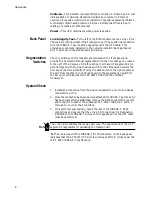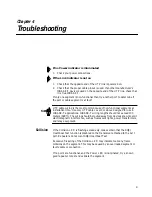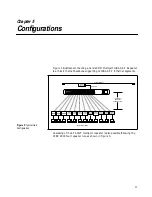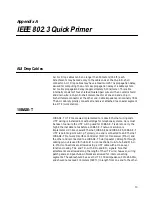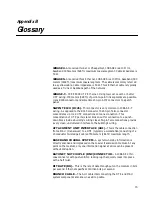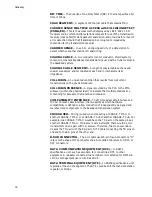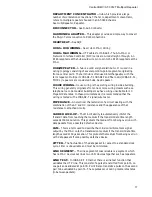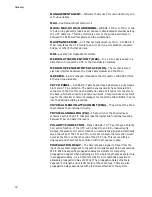
13
Appendix A
IEEE 802.3 Quick Primer
AUI Drop Cables
AUI or Drop cables can be no longer than 50 meters (164 ft.) each.
Attachments may be made only to the cable ends at the 15-pin D-shell
connector. AUI Drop cables may have a maximum 257 ns propagation delay,
as used for computing the worst case propagation delay of a cable system.
AUI cable propagation delay is approximately 5.13 ns/meter. This cable
internally consists of four shielded twisted pair wires with an overall shield
and drain wire; a 15-pin D-shell male connector at one end and a 15-pin
D-shell female connector at the other end. Cable impedance is nominally 78
Ω
.
The AUI cable typically connects a transceiver attached to a coaxial segment
to a DTE (workstation).
10BASE-T
10BASE-T UTP media was implemented to reduce Ethernet wiring costs.
UTP wiring is installed in most buildings for telephone systems. Care must
be taken to ensure the UTP wiring used for 10BASE-T is able to carry the
high Ethernet data rates before a 10BASE-T network solution is
implemented. Unlike coaxial Ethernet, 10BASE2 and 10BASE5, 10BASE-T
UTP is point-to-point wiring. Typically, one end is connected to an Ethernet
10BASE-T Network Interface Controller (NIC) or transceiver (MAU) and
the other end is connected to a 10BASE-T hub (repeater). Straight-through
cabling pin-out is used for hub-to-MAU connections. Hub-to-hub and MAU-
to-MAU connections are allowed using a UTP cable with a cross-over
function crossing TD+ and TD- with RD+ and RD- signals. No other
attachments are allowed along the length of the UTP wire; however, wiring
patch panels and punch-down blocks are allowed for interconnecting
segments. The cable should be Level 3 UTP, 100
Ω
impedance, 22 to 26 AWG,
and should not exceed 100 meters (328 ft.) in length from one end to the other.

